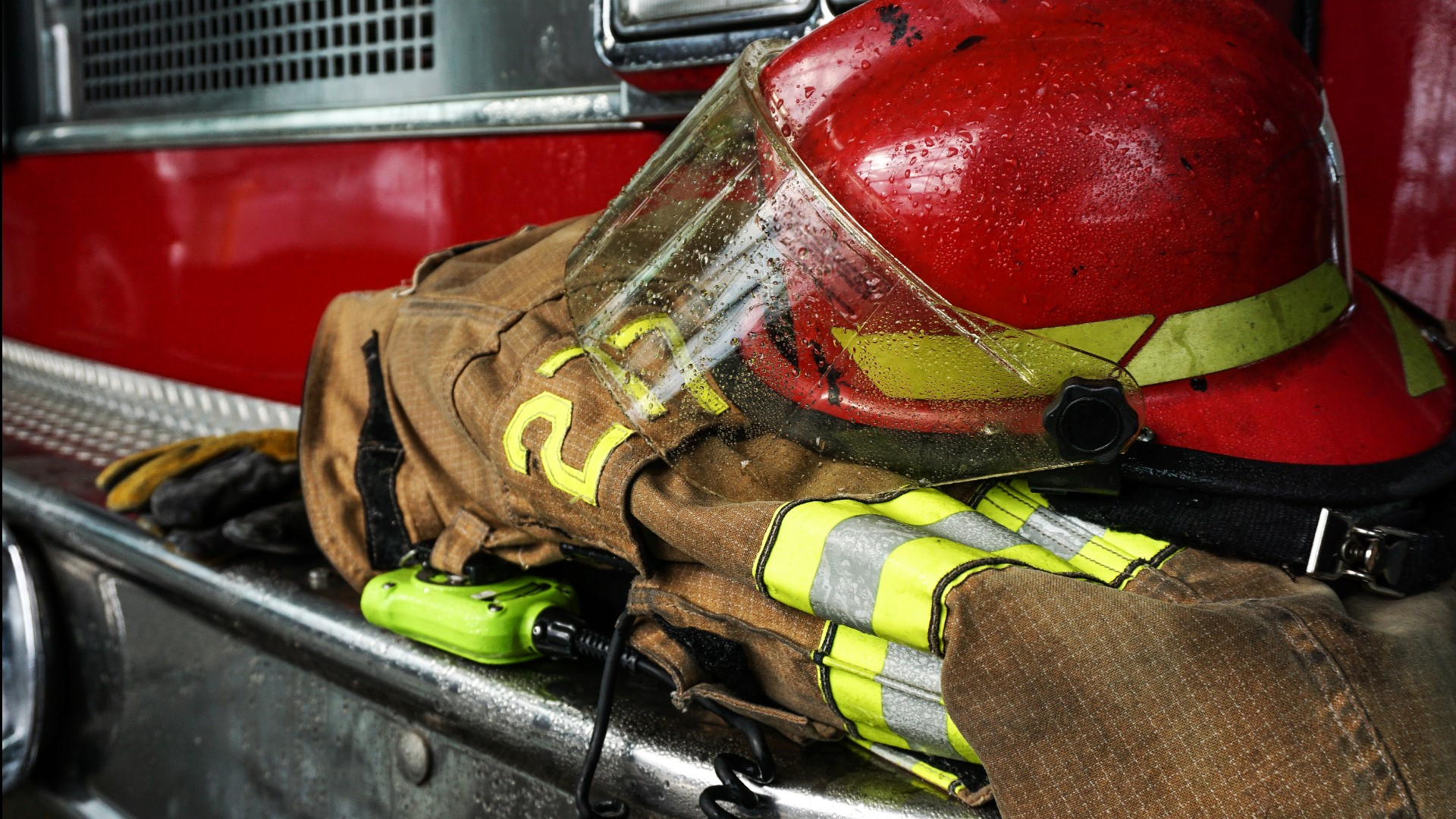DENVER — Firefighters have more to worry about than fires when they're on the job. There is also the risk of cancer, which can come from their own gear.
The International Association of Fire Fighters (IAFF) has been keeping an eye on fluoroalkyl and polyfluoroallcyl substances, known as PFAS chemicals, for a long time. The group is found in firefighting foam and is commonly used in firefighting gear for water resistance and heat protection.
It's also a known carcinogen.
"We're looking at this from the 30,000-foot level," said Doug Stern with IAFF.
Stern said there are currently two ongoing studies focused on PFAS, including one out of the University of Arizona that involves the Centers for Disease Control and Prevention (CDC). The study looks at blood samples from firefighters to see what kind of exposures researchers find in their bloodstreams.
The University of Oregon is also studying firefighter gear, specifically what chemicals are in it and in what amounts.
It's been an ongoing mission among fire departments to try and mitigate cancer risks with the information they currently have available.
David Foster at the Denver Fire, who is also the president of IAFF Denver Local 858, said they are in the process of switching out gear over the next year for the thousand firefighters working within the department.
"Switching gear out to more new, innovative gear," said Foster, who also said this new gear wouldn't have any PFAS.
He also said it's important to balance minimizing cancer risk and making sure the gear is safe enough to wear while responding to a fire.
At South Metro Fire Rescue, Lt. Nick Bjork, who oversees the department's gear, said the other component is making sure that the gear is properly washed, especially after the National Fire Protection Association found that there can be cross-contamination between dirty gear and gear that's not as dirty if they are washed together.
Many departments, including South Metro and Denver, make sure their firefighters have two sets of gear, so they can change out of dirty ones as quickly as possible to mitigate exposure to carcinogens.
South Metro has also worked to change its culture and start washing off right after a fire to reduce exposure.
The concerns over PFAS reached the Colorado state legislature this year, when lawmakers passed House Bill 1279 to limit the sale of firefighting foams with "intentionally added PFAS chemicals, in certain circumstances" by Aug. 2, 2021.
The law also prohibits training with these foams and would require manufacturers to "disclose whether the personal protective equipment they sell contains PFAS chemicals."
The bill said PFAS in firefighting foam has contaminated drinking water of nearly 100,000 Coloradans in areas near Petersen Air Force Base and around Boulder County, for example.
Jimmy Allen, with Aurora Fire Department and Colorado Professional Fire Fighters said, "PFAS is forever chemicals because it it takes a long time for your body to buffer it. It will be in the body for years and years and stays in your bloodstream."
Allen said cleaning up this kind of contamination is very expensive and fact-finding initiatives have been launched to determine if the PFAS levels in the water were dangerous.
At a national level, a similar law was also approved and sets aside money to continue to study PFAS contamination, including PFAS in firefighting gear.
U.S. Senator Jeanne Shaheen (D-NH), who helped spearhead this bill, detailed where some of the money goes in a release:
• $10 million to continue the PFAS health impact study Shaheen established in the FY2018 defense bill;
• $2 million for research into firefighter personal protective equipment, which is a key component in Shaheen's bipartisan bill with Senator Cory Gardner (R-CO) that takes important steps to address concerns regarding firefighters' occupational exposure to PFAS chemicals through their personal protective equipment;
• $251 million for aqueous firefighting foam replacement and disposal and for PFAS remediation at military bases;
• $43 million for the EPA to help states address PFAS contamination and remediation, as well as language authored by Shaheen that urges the EPA to expeditiously remediate Superfund sites contaminated by emerging contaminants, including PFAS; and
• More than $12.8 million in support of EPA efforts to designate PFAS chemicals as hazardous substances under the Superfund law, also known as CERCLA. Earlier this year, Senator Shaheen cosponsored legislation that would mandate that the EPA within one year of enactment declare PFAS as hazardous substances eligible for cleanup funds under CERCLA.
Firefighting gear can cost anywhere from $1,500 to $3,500 a set, which can put a financial strain on smaller departments, as well as volunteer fire departments.
Allen said part of Colorado's budget allows these smaller departments to apply for a grant to help fund things like extractor washing machines, bunker gear, protecting hoods, gloves and breathing apparatus.
SUGGESTED VIDEOS | Full Episodes of Next with Kyle Clark

